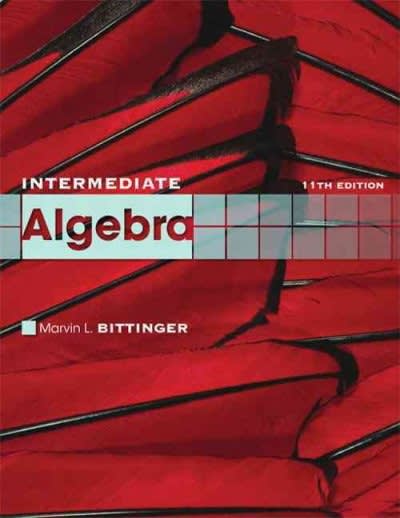Question
please do this on paper 1.You complete 10 trials of an experiment and find that the experimental probability for an event is very different from
please do this on paper
1.You complete 10 trials of an experiment and find that the experimental probability for an event is very different from the theoretical probability for that same event. What would you expect to happen if you increased the number of trials?
2.Over the course of a day at a bakery, 217 cookies were sold. .Of the cookies sold, 72 contained chocolate chips, 37 contained nuts, and 15 contained both chocolate chips and nuts. .What is the probability that a cookie sold that day contained chocolate chips, but no nuts?
(Hint: Use a Venn diagram. You do not need to use a formula.)
3.In your wallet, you have three nickels, two dimes, five quarters, four loonies, and one toonie. You also have three $5 bills, two $10 bills, and two $20 bills.
If you randomly pick one coin and one bill from your wallet, what is the probability that you pick a quarter and a $20 bill?
4.A pet store has a fish tank with 37 Tetras, 52 Goldfish, and 24 Danios.
a.What is the probability that a randomly selected fish will be a Tetra or a Danios?
b.You decide to buy two fish by randomly selecting them from the tank. What is the probability that you will get a Goldfish followed by a Tetra?
5.A spinner has five colours: red, blue, yellow, green, and purple.
a.The experimental probability of landing on red is 0.1, of landing on yellow is 0.2, of landing on green is 0.25, and of landing on purple is 0.15.
If the spinner was spun 150 times, how many times did it land on blue? [T2]
6.A study determined that if at least one of a child's parents went to university, the probability that the child would go to university was 81%. If neither of the child's parents went to university, the probability that the child would go to university was 28%. Tommy's parents went to university. Douglas' parents did not go to university.
What is the probability that either Tommy or Douglas goes to university (but not both)?
7.Explain how you would decide when to use P(A) + P(B) and when to use P(A) + P(B) P(A and B).
Step by Step Solution
There are 3 Steps involved in it
Step: 1

Get Instant Access to Expert-Tailored Solutions
See step-by-step solutions with expert insights and AI powered tools for academic success
Step: 2

Step: 3

Ace Your Homework with AI
Get the answers you need in no time with our AI-driven, step-by-step assistance
Get Started


